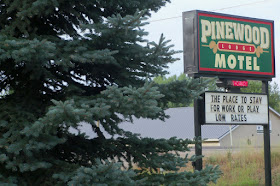I'm a fiction reader. Give me a good novel I can get lost in, and I'm happy to leave real life behind for a short time. And it's always a pleasant surprise when the book is written so beautifully that it's almost like poetry.
I finished The Ones We Choose by Julie Clark earlier this month. It was one I'd asked the Hutchinson Public Library to order, since I'd enjoyed Clark's other novel, The Last Flight, which was already in their collection. (I recommend both of Clark's novels.)
When I saw the description of the monarch butterfly, I took a photo of the page. I knew the majestic monarch butterflies would soon arrive in our backyard for the annual pilgrimage. I loved the idea that the butterfly knows where to go based on "a whispered memory embedded in its genes."
I suppose the phrase also resonated because I read it just before we left Kansas to travel to South Dakota to see Randy's brother at the hospice. The "whispered memories" are part of a human's life journey as well. No matter the disparate choices made by siblings in adulthood, there is a "whispered memory" of a shared history.
The butterflies typically take a "breather" on the north side of trees in our farmyard.
As Randy was planting wheat last week, he found that the shelterbelts bordering the field also had the fall equivalent of miniature runways as the orange and black flying machines seemed to practice touchdowns and takeoffs like a student pilot practicing his/her craft. (It's not a good photo, but it sort of shows how we needed an air traffic controller for all the activity.)
I got one shot with multiple butterflies, but there definitely wasn't overcrowding in our annual Air bnb.
With the north wind, the butterflies seem to have departed for warmer climes after more than a week sheltering in our tree lines. I sure hope next year's monarchs will hear that "whispered memory" that brings them back to Central Kansas.
And I hope their ancestors stop by our pastures next spring to lay some eggs in the milkweed.
 |
| Ninnescah Pasture, June 2020 |
Dr. Orley “Chip” Taylor has been watching the populations of this large orange butterfly for years. He heads Monarch Watch at the University of Kansas, a group that coordinates the efforts of civilians and young students to tag monarch butterflies across the United States and Canada.
Monarch butterflies are not cold hardy and cannot survive our freezing
winters. However, they are one of very few insect species that can feed
on milkweed.
 |
| This milkweed bloomed in our pastures this summer. |
Milkweed is cold hardy, with milkweed species growing all the way into Canada. Therefore the monarch butterflies fly north each year to take advantage of this milkweed food source.

With the approach of winter, they must fly south again.
 |
| On goldenrod - From Kim's County Line - September 2016 |
Yesterday, Quivira National Wildlife Refuge (which is only a few miles away from our house) posted a photo of monarchs from this past weekend near the Education Center there. If only I'd known ...





















































